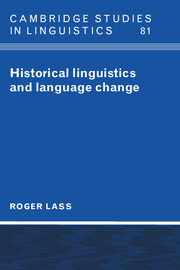Book contents
- Frontmatter
- Contents
- Preface
- Conventions, abbreviations and symbols
- General prologue: time travel and signal processing
- 1 The past, the present and the historian
- 2 Written records: evidence and argument
- 3 Relatedness, ancestry and comparison
- 4 Convergence and contact
- 5 The nature of reconstruction
- 6 Time and change: the shape(s) of history
- 7 Explanation and ontology
- References
- Index of names
- Subject index
3 - Relatedness, ancestry and comparison
Published online by Cambridge University Press: 05 June 2012
- Frontmatter
- Contents
- Preface
- Conventions, abbreviations and symbols
- General prologue: time travel and signal processing
- 1 The past, the present and the historian
- 2 Written records: evidence and argument
- 3 Relatedness, ancestry and comparison
- 4 Convergence and contact
- 5 The nature of reconstruction
- 6 Time and change: the shape(s) of history
- 7 Explanation and ontology
- References
- Index of names
- Subject index
Summary
From the most remote period in the history of the world organic beings have been found to resemble each other in descending degrees, so that they can be classed in groups under groups. This classification is not arbitrary like the grouping of the stars in constellations.
(Charles Darwin, The origin of species, ch. 14)‘Family resemblances’
Anyone who knows me and my family can see that I have ‘my father's nose’ (I spare the reader further details). Of course it's really mine, but it looks like his, and my paternal grandfather's as well. This nose (better, more or less faithful copies of it), has been ‘passed down’ in the family. It's a visible sign of my pedigree, carried on my face because its blueprint is carried in my genes, the biological analogue of an armorial bend sinister. It ‘repeats’ from generation to generation; it identifies me as belonging to a particular lineage, is literally a message from the past. In this chapter I explore, starting from rather elementary first principles, the complex notions involved in the idea of linguistic ‘inheritance’, and the sorting of languages into (presumably phylogenetic) taxa.
It's a commonplace that there exist sets of languages that (informally, intuitively) resemble each other in various ways.
- Type
- Chapter
- Information
- Historical Linguistics and Language Change , pp. 104 - 171Publisher: Cambridge University PressPrint publication year: 1997



